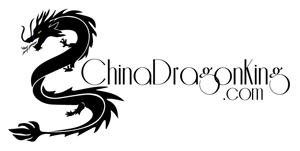About China and its Dragon King Rulers – Just who were the Dragon Kings?
THEY ARE RULERS OVER ALL BODIES OF WATER, INCLUDING, CREEKS, RIVERS, PONDS, LAKES, AND OCEANS !
SOME INFORMATION …..
About the China Dragon King
According to www.iAsk.ai Ask Ai Search Engine:
Background on the China Dragon King
The China Dragon King, also known as the Longwang or Lung Wang, is a significant figure in Chinese mythology and folklore. It is believed to be the ruler of all water bodies, including rivers, lakes, and oceans.
The China Dragon King is often portrayed as a dragon with a human-like face and a serpent-like body. It is also associated with the Chinese zodiac, as the symbol of the dragon is said to bring good fortune and prosperity to those born in the Year of the Dragon.
In Chinese mythology, the China Dragon King is a powerful deity that is responsible for controlling the water elements and maintaining the balance of the natural world. It is believed that the Dragon King has the ability to create rain, control floods, and even summon other mythical creatures, such as the Dragon Princess or the Dragon Horse.
CHINESE “SON’S” OF THE
DRAGON KING?
The China Dragon King is also known to have four sons, who each rule over a different direction of the compass and a specific body of water. These sons are known as the East Dragon King, the South Dragon King, the West Dragon King, and the North Dragon King. Each of these Dragon Kings has their own palace, which is located at the bottom of a major water body, such as a river or a lake.
In Chinese culture, the Dragon King is often depicted in art, literature, and traditional festivals, where it plays an essential role in the celebration of the Chinese New Year and the Dragon Boat Festival.
The China Dragon King in Literature and Art
Throughout Chinese history, the China Dragon King has been a popular subject in various forms of art and literature. It has been depicted in paintings, sculptures, and even in traditional Chinese operas. Some famous examples of the Dragon King’s appearance in literature include the classic Chinese novel “Journey to the West” and the “Water Margin,” where the Dragon King plays a significant role in the story.
In art, the Dragon King is often portrayed as a majestic and powerful figure, with intricate details on its body and facial features. These depictions can be found in various forms, such as silk paintings, pottery, and jade carvings.
The China Dragon King has also been a popular subject in traditional Chinese operas, where it is often depicted as a wise and benevolent ruler. In these performances, the Dragon King is portrayed by skilled actors who wear elaborate costumes and makeup to embody the mythical creature.
The China Dragon King in Modern Culture
In modern times, the China Dragon King continues to be an essential part of Chinese culture and tradition. It can be found in various forms of media, such as television shows, movies, and even video games. One notable example is the popular animated film “Kung Fu Panda,” where the Dragon King plays a significant role in the story line.
Additionally, the China Dragon King remains an important symbol in Chinese astrology, where it is believed to bring good fortune to those born in the Year of the Dragon. This belief has led to the creation of various dragon-themed accessories, such as jewelry, clothing, and home decorations.
Furthermore, the China Dragon King is often celebrated during festivals and events that focus on Chinese mythology and folklore. These celebrations often include traditional dragon dances, parades, and other performances that showcase the beauty and power of the Dragon King.
In conclusion, the China Dragon King is an important figure in Chinese mythology and folklore, with a rich history that can be traced back to ancient times. Its influence can be seen in various forms of art, literature, and modern culture, as well as in traditional festivals and events. The China Dragon King continues to be an essential part of Chinese heritage and remains a powerful symbol of good fortune, prosperity, and the natural world.
3 Authoritative Reference Titles
- “Chinese Mythology: An Introduction” by Robert Eno and Barbara N. Finley
- “Dragon Kings: The Chinese Mythological Tradition” by David Knechtges
- “The Dragon King and the Dragon Horse: A Study in Chinese Mythology” by William H. Nienhauser Jr.

